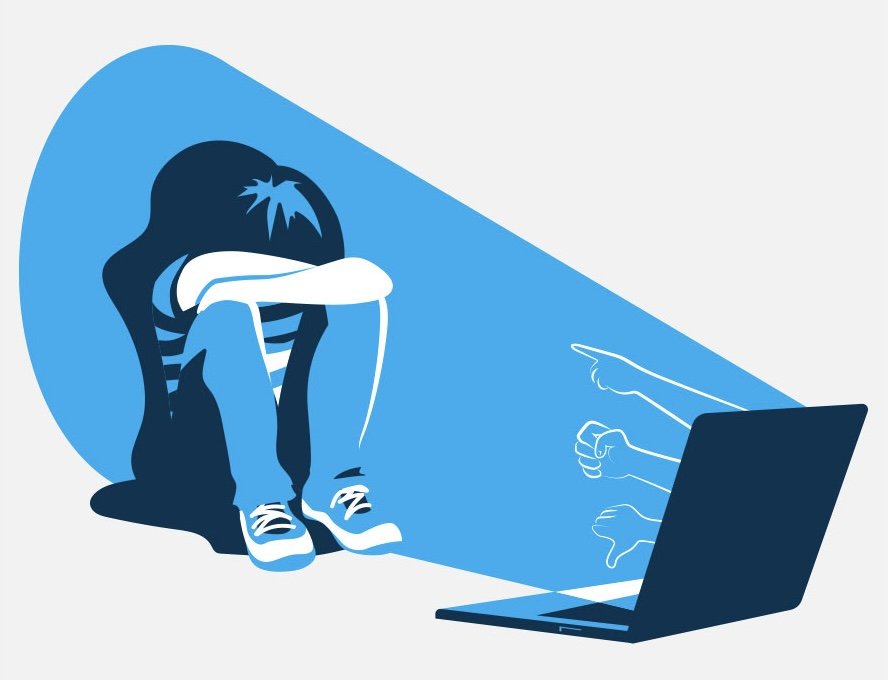Cyber Bullying
(Image from Talkspace)
Definition of cyber bullying
Bullying can be defined as intentional and aggressive behaviour occurring repeatedly against a victim where there is a real or perceived power imbalance, and where the victim feels vulnerable and powerless to defend himself or herself. When bullying occurs in the online world – through computers, cell phones, or other electronic devices - it’s referred to as bullying online, or cyberbullying.
Cause
1. Intention to harm
2. Bullying causes more bullying
For instance, when a child has experienced bullying, they are more likely to bully someone else. In such situations, the child may believe their behavior is justified because they’ve been a victim themselves. They might target their bully or another child they perceive as vulnerable.
3. Desire for power
Some people engage in cyberbullying to feel a sense of power or control over others, often as a way to compensate for their own insecurities.
4. Anonymity
The internet allows people to hide behind anonymous profiles, providing a sense of detachment from their real identities. This anonymity can reduce their fear of judgment or accountability, which in turn can embolden them to say or do things they wouldn't normally have the courage or willingness to do in person.
5. Cultural or environmental factors
Environments that glorify aggression or where bullying is normalized can significantly contribute to the rise of cyberbullying by fostering a culture in which hostile and harmful behaviors are seen as acceptable or even desirable.
(Image from the Internet)
Category
Flaming
Outing
Trolling
Name-calling
Spreading false rumors
Sending explicit images or messages
Cyberstalking, harassment, and physical threats
Phenomenon
Violence in schools comes in many forms, including the common occurrence of bullying. Young people are living more and more of their lives online, and that includes their academic lives. The classroom no longer ends once a student leaves class. And, unfortunately, neither does schoolyard bullying. The front door was once a barrier to schoolyard bullies; now, social media allows them to follow their victims into their homes. Improving young people’s education experience means accounting for the environment they encounter online as well as offline.
Impact
Cyberbullying causes profound harm as it can quickly reach a wide audience and leaves a permanent footprint online for all involved. Unlike in-person bullying, cyberbullying can reach a victim anywhere, at any moment, often leaving the child being bullied in a perpetual state of anxiety.
Victims of cyberbullying are more likely to skip school than other students. They also are more likely to receive poor grades and experience low self-esteem and health problems. In extreme situations, cyberbullying has led to suicide.
(Image from netmeds)
Pertinent articles of law or policies and prevention
China:
The Provisions on the Governance of Information on Cyber Violence have been considered and adopted at the 28th Room Council Meeting of 2023 of the State Internet Information Office (SIIO) on December 25, 2023, and agreed by the Ministry of Public Security (MPS), the Ministry of Culture and Tourism (MCT), and the State Administration of Radio and Television (SART), and are hereby promulgated to come into effect on August 1, 2024.
US (California):
Bullying in an educational facility includes communications by electronic means. The Safe Place to Learn Act and other sections establish a student's "right to attend classes on school campuses that are safe, secure, and peaceful." Using an electronic device to cause someone to fear for their life (an extreme form of bullying) can be charged as a misdemeanor punishable by up to one year in jail and/or a fine of up to $1,000.
Real-life example
A recent example of cyberbullying is the case of Hana Kimura, a Japanese professional wrestler and reality TV star. In 2020, Hana faced relentless online harassment after appearing on the show "Terrace House." Viewers criticized her actions on the show, leading to a barrage of hateful comments and messages on social media. The online abuse escalated to the point where Hana expressed her distress publicly. Tragically, she died by suicide in May 2020, highlighting the devastating impact of cyberbullying and prompting widespread calls for stricter regulations on online harassment in Japan.
(Image from “wrestling forum” website)



